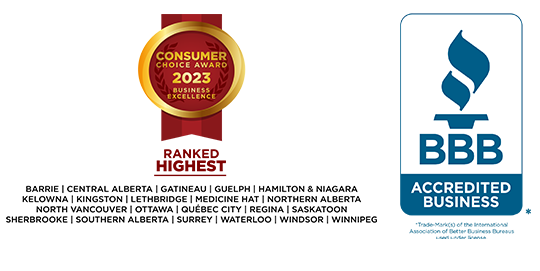How to teach your children financial literacy on Family Day
My father once told me that being an adult is knowing that $5,000 is not a lot of money to have, but it is a lot of money to owe. I’m sure he can’t claim credit for the phrase, but it rings true and has stuck with me all these years — even if it took awhile to really sink in.
Parents and educators have a responsibility to ensure our young people understand the consequences of overspending and develop the life skills to budget. But it may be a difficult conversation to have, especially if you are struggling with debts of your own.
To help you along, here are some tips and tricks to help you begin the conversation with your kids and set them on a path towards financial literacy and independence.

Children are small, so start small
Kids need tangible, relatable ways to learn new information. Therefore, a great introduction to savings is through the toy aisle. Your kids might have received some spending money as a gift or through an allowance and are now anxious to spend it on the first thing they see.
It can help to talk about how if they wait and save up their money, they can buy the big toy that they have been pining for all year long. Delaying gratification is a difficult lesson to learn, for kids and adults, but it’s one of the foundational lessons of budgeting.
Talk about needs versus wants
Another fundamental basic of budgeting is we must pay for our needs first before we pay for our wants. Kids need to understand the difference between the two at a young age, so talk about your own household budget and explain it to them.
- Needs: housing, food, vehicle expenses, clothing for the whole family, etc.
- Wants: restaurant meals, after-school activities, family vacations, etc.
This will help them understand the spending choices you make and show them how needs must be prioritized over wants — and that sometimes, it’s impossible to get everything we want.
Make finances a family affair
Once your children understand the concept of needs versus wants, don’t be afraid to talk to them about your finances in an age-appropriate way. Having an open conversation about the household budget or the cost of the big family vacation is a way to model to your kids that it’s okay to talk about money and finances and demonstrates that the subject doesn’t have to be taboo.
It’s okay to talk about your financial limitations or challenges as well. The key is to do it in a way that doesn’t make your kids anxious or scared, or that doesn’t push adult problems onto them.
For example, I recently helped a couple file a Consumer Proposal that settled their debt and gave them a single, manageable payment to make. Although this gave them more room in their budget to help make Christmas happen for their family, it didn’t give them enough for an overflowing tree. So, they talked to their children before Christmas to let them know things would be a bit different this year — but it didn’t mean they loved them any less.
Mom was dreading a tantrum on Christmas morning. But because they had talked beforehand, their children understood the true value of the gifts was the thought behind them, and not just the number of presents they received.
Allow your children to safely try out a budget
It’s safest to allow your kids to make mistakes while they’re still at home instead of when they get out into the real world. They should have some experience with money and a budget before they’re offered a credit card when they step on campus.
To help with this there are several tools you may want to explore. For example, here are two suggestions for a cash-based and a cashless budgeting system:
Cash-based system
Have your kids sort their allowance funds into jars, bins, or envelopes for categories including:
- Activities with friends — for movies, games, etc.
- Mall money — to pay for clothes and shoes, etc.
- Food money — for their favorite takeout or coffee.
- Special event savings — for items that are farther out that they need to save for, such as concert tickets, prom dresses, or a special trip.
Your children should only withdraw from the envelopes for each specific spending category. Ideally, they won’t borrow between envelopes to make up for any overspending. Make it a Pinterest-worthy activity together to decorate the containers and follow up periodically to see the progress.
Cashless system
Many banks have specific cards and accounts for kids that allow for parental oversight. One recent entry is RBC’s Mydoh card, which allows you to e-transfer their allowance, has a task tracker, and monitors earning and spending for you through an app.
Talk to your bank if you think your child is ready for an account and attached card. If there are no specific oversight or limits provided, you may wish to hold onto the debit card in the beginning to make sure they are using their account responsibly. There is no age limit in Canada for debit cards.
Take the next steps towards financial health
You know your child best and you’ll find the right time to introduce them to the world of financial literacy. But your own financial health is equally important.
If your family is struggling with debt, contact a Licensed Insolvency Trustee (LIT). LITs can help you explore all your formal and informal debt relief and budgeting options so you can focus on your children and make sure they have all the tools they need to become financially independent adults. Together, we can help find sustainable solutions to help you and your family on the journey towards a debt-free future.

